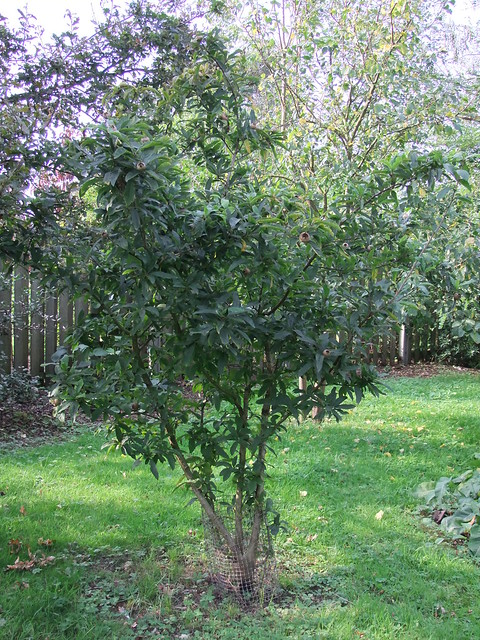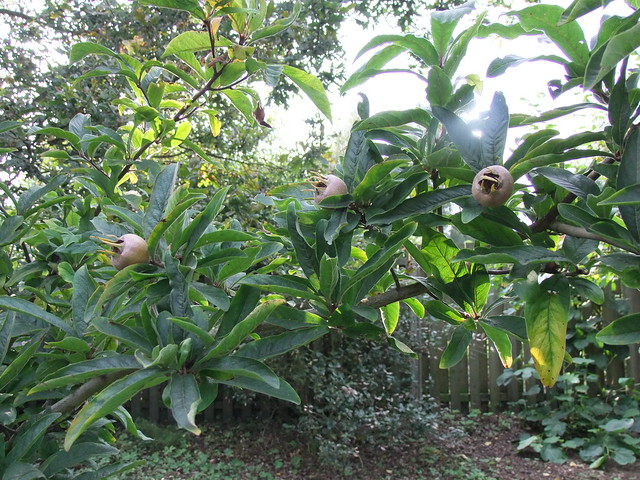A few years ago my parents aquired a patch of land that borders their own and incorporated it, of sorts as a gateway area between the more controlled area of the garden and the field of trees we cal the arboretum. This patch which it's previous owner had planted with nuts and some particularly nastily shaped willows to encourage wildlife became known (post willow removal) as Willowsdown for obvious reasons. The nuts and many other trees were retained and the willows were replaced with some more refined options to create a woodland area rich in food and wildlife. Sat in that area, between a scarlet oak, a myrobolan plum and a Robinia is this little scrubby tree.
Mespilus germanica known in the UK as the Medlar is a strange species, often limited to odd little gardens and old orchards, in spite of its beauty (there used to be a couple which were planted by the new law campus in Cambridge (England not Mas.) - the only modern public use of this plant I've seen). Medlars are in the rose family and are closely related to hawthorns. As such they produce big single rose like white flowers but also rather gorgeous long thin leathery leaves.
Oh and yes. Remarkable looking fruit.

Somewhere between a russet apple and a rosehip isn't it? Medlars have fallen out of fashion for a number of reasons at least two of which are that they look like crap and need to be frozen and then start to rot (this is called bletting) before their true taste kicks in both of which make them somewhat unsupermarketfriendly. Meanwhile those in the know make, beg, borrow or buy medlar jelly and proclaim it delicious.
Incidentally the Victorians called these things "Dog's Arse" for reasons of appearance rather than taste. I rather like the idea of selling Medlar Jelly under the brand name Dog's Arse......


No comments:
Post a Comment